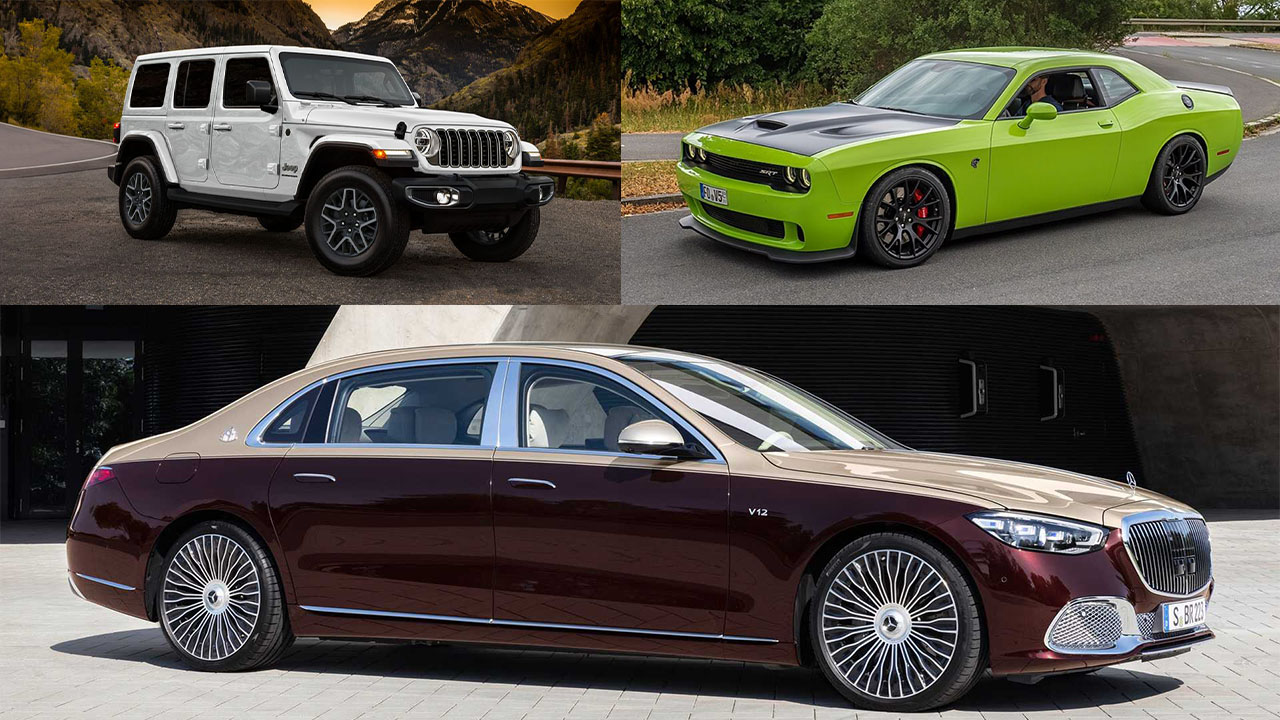As reported by the American Automobile Association, the average American spends 61 minutes each day in their car, which totals approximately 15 full days annually.
Given the significant amount of time spent behind the wheel or as a passenger, many car buyers are increasingly prioritizing comfort when selecting their vehicle.
“Comfort” can have various meanings depending on the driver’s needs: it might refer to luxurious interiors, heated seats for those living in colder climates, or spacious and cozy rear seating for family road trips.
In this article, we will explore some of the most comfortable cars available in 2023, ranging from affordable family vehicles to high-end luxury sedans.
Cars That Are Comfortable for Long City Drives
It’s worth noting that we have excluded SUVs from this list, as they are covered in a separate article dedicated to the most comfortable SUVs.
1. Audi A7
The Audi A7 offers a perfect combination of comfort and performance, featuring a luxurious interior paired with a 335-horsepower, turbocharged V6 engine.
The vehicle stands out in the luxury car segment, offering three-zone climate control and leather upholstery as standard, with the option to upgrade to Valcona or Milano ultra-premium leather. These elements contribute to the A7’s exceptional comfort levels.
The comfort of rear-seat passengers is also a top priority, whether they are children or adults. The A7 ensures ease of use with its LATCH anchor points, making the installation of child car seats straightforward.
Additionally, the A7 offers a range of optional comfort features for rear passengers, such as rear-seat climate controls, heated rear seats, and charging points for mobile devices to help keep passengers entertained during long journeys.

The Audi A7 is a luxury midsize sedan that seamlessly combines the sleek design of a coupe with the practicality of a hatchback, offering an elegant yet sporty driving experience.
First introduced in 2010 as a 2012 model in the U.S., the A7 is currently in its second generation, which debuted in 2018. Its 5-door liftback body style sets it apart from traditional sedans, offering ample trunk space with the added convenience of a hatchback design.
Built on the same platform as the Audi A6, the A7 has a more dynamic and stylish look, featuring a long, sloping roofline and a streamlined profile.
Under the hood, the Audi A7 comes with a range of engine options, most commonly a 3.0-liter V6 turbocharged engine paired with a mild-hybrid system, offering a balance of power and efficiency.
For those seeking more performance, the S7 and RS7 models boast more powerful engines, including a twin-turbo V6 and V8, respectively, while the RS7 is a high-performance variant designed to deliver exhilarating acceleration and handling.
All A7 models come standard with Audi’s quattro all-wheel drive system, ensuring superior traction and stability. The A7 is also equipped with a 7-speed S tronic dual-clutch transmission, providing smooth and quick gear shifts.
Inside, the A7 offers a luxurious, tech-heavy cabin that reflects Audi’s commitment to quality. The interior features a dual touchscreen infotainment system, with one screen dedicated to infotainment and the other for climate and vehicle controls.
The car is also equipped with Audi’s Virtual Cockpit, a fully digital instrument cluster that can be customized for various displays.
The A7 includes a range of advanced driver-assist features, such as adaptive cruise control, lane keep assist, parking assist, and night vision, making it not just a stylish but also a safe vehicle.
The cabin is spacious, with high-end materials used throughout, and the cargo space is generous due to the liftback design, offering more versatility than a traditional sedan trunk.
The Audi S7 and RS7 are sportier variants of the A7, with the S7 featuring a more powerful engine and enhanced suspension for improved handling, while the RS7 is the performance king of the lineup, offering a twin-turbocharged V8 engine for outstanding power and track-ready dynamics.
Additionally, there is the Audi A7 Plug-in Hybrid (PHEV), which combines a gasoline engine with an electric motor, providing better fuel efficiency and a short electric-only range.
Despite its appeal, the A7 is not without drawbacks; the sloping roofline can limit rear-seat headroom, and the interface, which is touchscreen-heavy, might not appeal to all drivers.
However, the A7 remains a standout option in its class, combining luxury, performance, and cutting-edge technology in a single, beautiful package.
In terms of pricing, the base Audi A7 starts around $75,000, with the S7 and RS7 commanding higher price tags, typically starting at $90,000 and $130,000, respectively.
The A7 Plug-in Hybrid is priced at about $83,000, with the potential for tax incentives. This makes the Audi A7 a premium offering, but one that delivers high value in terms of design, performance, and luxury features.
Also Read: Top 9 Luxury Cars That Will Surprisingly Last Forever
2. Toyota Camry
The Toyota Camry ranks among the best-selling vehicles in the US, and with good reason: its reputation for reliability and its ability to comfortably transport the whole family have made it a top choice for budget-conscious young families.
Despite its affordability, the Camry does not sacrifice comfort. It offers a variety of features such as synthetic or genuine leather upholstery, a heated steering wheel, and ventilated and heated front seats, making it not only a practical option but a comfortable one as well.
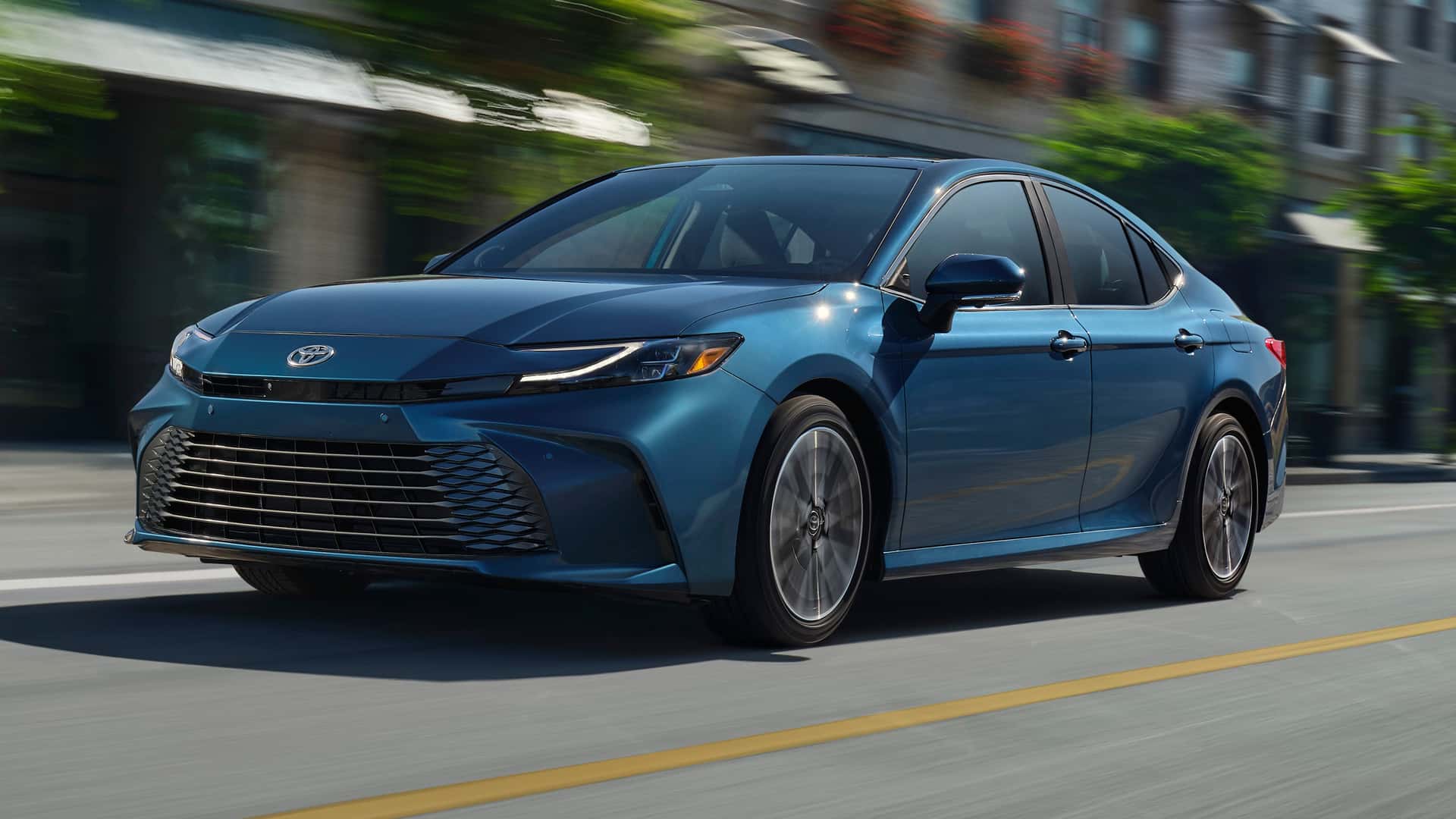
Installing and uninstalling child car seats is also a straightforward task, demonstrating that Toyota has considered the comfort of every passenger, including the youngest.
For the 2024 model year, the Camry is offered with two engine choices: a 203-hp, 2.5-liter four-cylinder engine, or a 301-hp, 3.5-liter turbocharged V6, which is soon to be phased out.
And for those who may not be fond of the current model’s styling, the upcoming all-new generation (pictured below) set to arrive for 2025 is already being recognized as one of the most stylish sedans in its class.
3. Bentley Flying Spur
The Bentley Flying Spur stands as one of the most comfortable luxury vehicles on the market, offering an ultra-high-end interior and an exceptionally smooth ride, whether you’re behind the wheel or enjoying the experience from the back seat with a chauffeur at the helm.
There is no shortage of passenger space, making it easy to stretch out, open a bottle of champagne, or seamlessly join a business call.
Inside the cabin, the Flying Spur showcases a wealth of premium materials, including leather, wood trim, and metal accents.
Rear-seat passengers are treated to a dedicated touchscreen that allows them to control a wide range of comfort features independently these include climate control settings, window shades, and even a built-in massage function designed to relieve tired muscles.
When it comes to performance, the Flying Spur Speed marks the final variant to feature Bentley’s distinctive W12 engine, a 6.0-liter twin-turbocharged unit that delivers 626 hp and 664 lb-ft of torque, launching the elegant sedan from 0 to 60 mph in just 3.7 seconds on its way to a top speed of 207 mph.
Other versions come with smaller engines: a 2.9-liter V6 hybrid producing 536 hp and a 4.0-liter twin-turbo V6 generating 542 hp.
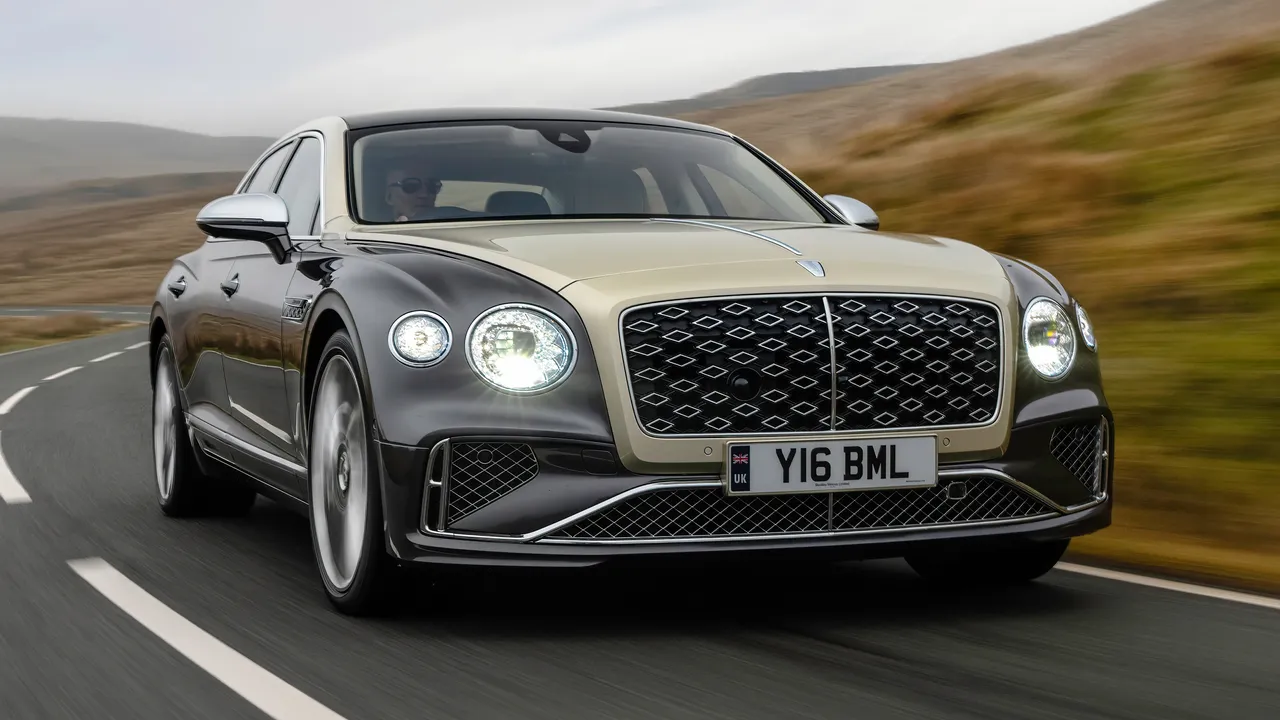
The 2025 Bentley Flying Spur proves that ultra-luxury doesn’t have to sacrifice driving enjoyment. This grand-touring four-door sedan is just as satisfying to drive as it is to be driven in.
Beneath the hood, the Flying Spur boasts a new 771-hp plug-in hybrid (PHEV) powertrain, which combines a twin-turbo V-8 engine with a lively electric motor. Inside, the cabin is adorned with Bentley’s finest materials, including ultra-soft leather, intricate metal accents, and exquisitely crafted wood trim.
The rear seat area is designed to provide an indulgent experience, with options for seating three across on a bench or, more preferably, two in individual bucket seats. Massage functionality is available for all four outboard positions.
As expected from a Bentley, the tech features are top-notch, and the Flying Spur offers a quiet and relaxing environment that also reveals surprising athleticism.
Whether you’re in the driver’s seat or being chauffeured, this vehicle provides effortless performance when you want to explore its dynamic capabilities, thanks to its meticulously engineered chassis.
For the 2025 model year, the Flying Spur receives a slight styling refresh, complementing its new hybrid powertrain.
While changes such as a redesigned grille, reshaped bumper, and updated wheel designs are subtle, the most notable update is the 771-hp twin-turbo V-8 and electric motor combination, which delivers a significant power boost over the previous nonhybrid V-8.
Bentley claims that the PHEV system can accelerate the Flying Spur to 60 mph in just 3.3 seconds, though it may achieve an even faster time in testing. On a full charge, it is estimated that the Flying Spur will offer about 40 miles of electric-only driving.
Inside, the cabin has been upgraded with new quilted leather upholstery and enhanced seats both front and rear. Additionally, the car’s infotainment system now includes wireless Apple CarPlay and Android Auto integration.
The 2025 Bentley Flying Spur is priced starting at $276,450, with the Mulliner trim pushing the price to $298,250, depending on the selected options.
For those looking for a truly unique car, Bentley’s Mulliner customization program offers a wide selection of exterior colors and styling choices, as well as various interior finishes, such as different types of wood, leather, and polished metal accents.
While the hybrid system is generally smooth and powerful, there may be the occasional noticeable jolt when the V-8 kicks in to assist the electric motor.
The vehicle is equipped with an eight-speed dual-clutch automatic transmission, standard all-wheel drive, and a rear-wheel steering system, which enhances its agility at low speeds.
The Flying Spur’s adaptive suspension system, which includes air springs and dual-valve dampers, offers a wide range of settings.
In comfort mode, the car glides over imperfections in the road with minimal intrusion to the cabin, while in sport mode, the suspension firms up to transform the luxury sedan into a more responsive sports sedan.
4. Mercedes-Maybach S 680
While even the standard version of the Mercedes-Benz S-Class ranks among the most luxurious high-end vehicles available, the ultimate expression of comfort and elegance can be found in the Maybach S 680.
This top-tier model features a premium sound system with 30 speakers, heated and ventilated seats in both the front and rear, and two additional infotainment screens for rear-seat passengers.
For an even more indulgent experience, the seats offer an optional massaging function, ensuring the most relaxing ride imaginable.
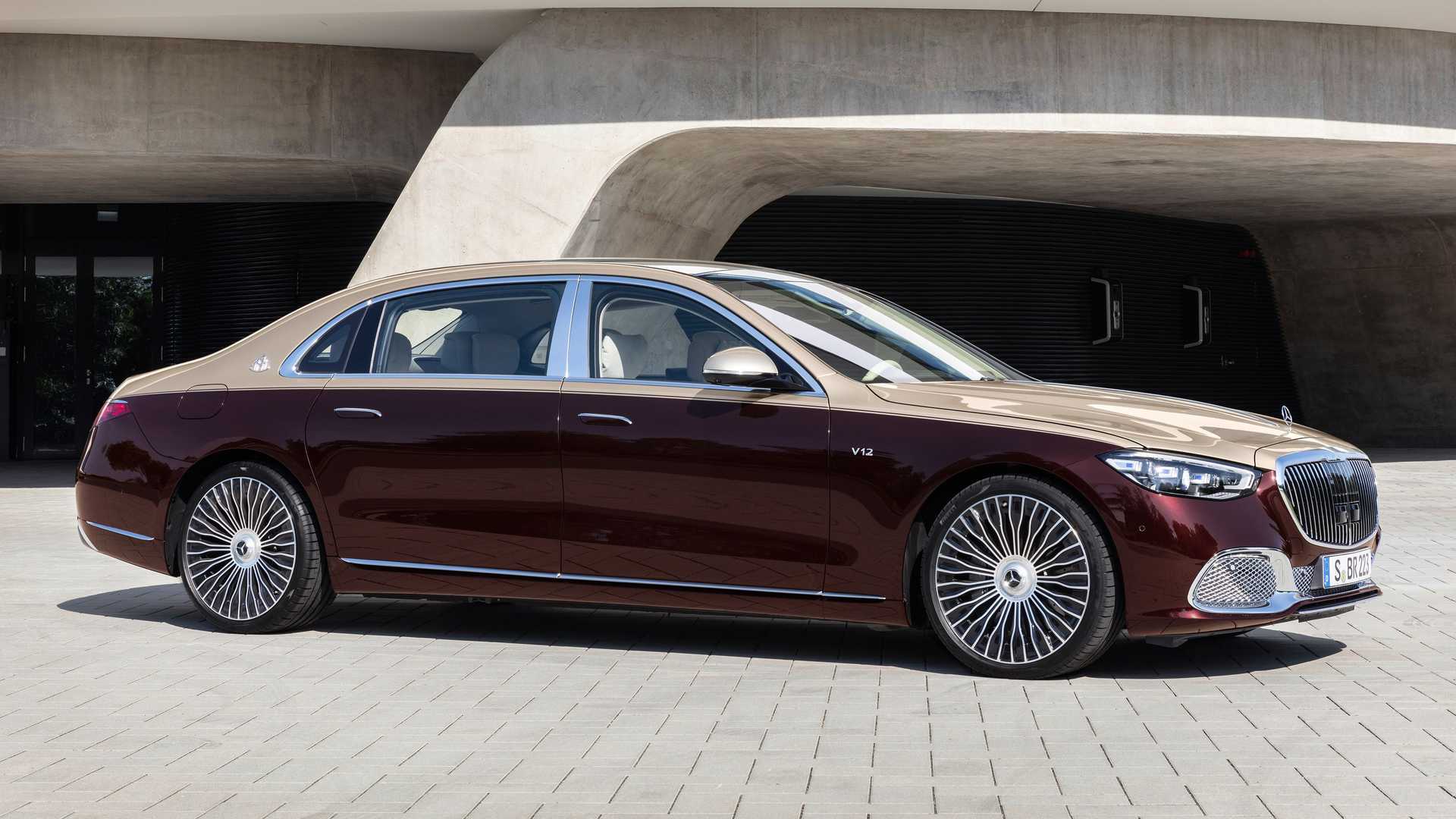
As you recline in your seat, the S 680’s advanced body control system continuously scans the road ahead and automatically adjusts the suspension, allowing the vehicle to glide effortlessly over bumps and uneven surfaces.
If you’re searching for the finest “money is no object” luxury vehicle for long-distance comfort, the S 680 deserves serious consideration.
Of course, one can’t overlook the impressive powertrain—under the hood lies a handcrafted 6.0-liter twin-turbo V12 engine producing 621 hp, which propels the Maybach S with remarkable smoothness and power, making it feel almost weightless on the road.
5. BMW 7 Series/i7
While the latest design of the BMW 7 Series may not appeal to everyone, we’re firmly in the camp that appreciates it.
This model represents a true technological marvel both inside and out, boasting one of the most luxurious and feature-rich cabins we’ve encountered.
Highlights include the impressive drop-down screen for rear passengers and the illuminated crystalline Interaction Bar that spans the dashboard.
Comfort is front and center, whether you’re in the driver’s seat, benefiting from an array of well-integrated driver assistance systems, or relaxing in the rear, where the air suspension and plush, massaging seats that recline significantly provide a serene experience.
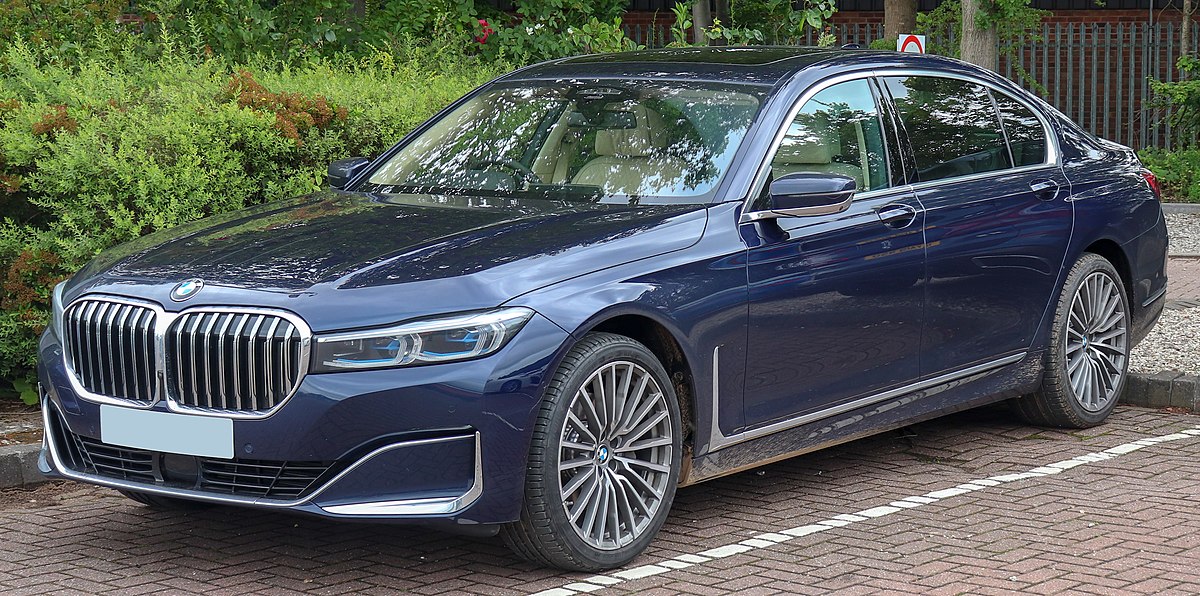
One of the most exciting aspects of the 7 Series is the wide range of available powertrains.
Options include the six-cylinder 740i with 375 hp, the V8-powered 760i delivering 536 hp, the plug-in hybrid 750e generating 483 hp, and the fully electric i7, which offers three configurations, topping out with the powerful 650-hp M70 version.
The ride quality is exactly what you’d expect from a premium luxury sedan supremely smooth. Meanwhile, the quad-zone climate control ensures every occupant stays perfectly comfortable, all while enjoying crystal-clear audio through the high-end Bowers & Wilkins sound system.
Developed in collaboration with the gas-powered 7-series, the BMW i7 represents the brand’s pinnacle of luxury in the electric vehicle (EV) market.
It shares the same sheet metal as its gasoline counterpart and is available with both rear- or all-wheel drive, offering three different power levels. Inside, the i7’s interior is largely similar to that of the gas 7-series, particularly in the rear cabin, which provides exceptional comfort.
Thanks to features like rear-wheel steering, this large sedan feels more agile and compact than its actual size when behind the wheel, and the robust electric motors help offset the added weight of the battery.
Key competitors include the Mercedes EQS sedan and the Tesla Model S. While the Benz is comparable in terms of luxury, and the Tesla boasts a longer range, neither can match the i7’s serene and comfortable ride.
The i7’s near-silent interior adds to its appeal, making it one of our top picks in its segment. As a result, the BMW i7 has earned a spot on our 2025 Editors’ Choice list.
For 2025, BMW made several adjustments, including the addition of more standard features. The Executive Package now includes the contents of the Premium Package 2, which features illuminated grilles, park assist, and a 360-degree camera system.
Additionally, the eDrive50 model now comes standard with the Panoramic Sky Lounge Roof, while xDrive60 models feature massaging front seats and the Luxury Rear Seating Package, which includes ventilated and massaging rear seats.
The 2025 BMW i7 has a starting price of $106,875, with prices reaching up to $169,675 depending on the trim and options selected. The base eDrive50 starts at $106,875, while the xDrive60 model is priced at $125,375, and the M70 model reaches $169,675.
For those not looking for extreme performance at every stoplight, we recommend the xDrive60. This model offers plenty of power with its 536-hp powertrain and comes standard with numerous desirable features.
Like the gasoline-powered 7-series, the i7 is a luxurious sedan designed to pamper rear-seat passengers, especially when equipped with the optional Executive Lounge package.
This package adds features such as plush reclining rear seats with massage, making it an excellent upgrade for those seeking extra comfort.
The i7’s powertrain options include the rear-wheel-drive eDrive50, which generates 449 horsepower, and the all-wheel-drive xDrive60, which combines motors on each axle to produce 536 horsepower
. The M70 model also features all-wheel drive and boasts an impressive 650 horsepower. Despite its size, the i7 feels surprisingly nimble and light on its feet, though it doesn’t quite match the sharpness of BMW’s true M-series cars.
While the i7 may not attract buyers specifically seeking sports-sedan handling, it delivers a smooth, quiet ride and a luxurious, tranquil cabin, which are likely to appeal to those prioritizing comfort and refinement.
For those still interested in a gasoline-powered 7-series, that model remains available and is reviewed separately.
Worst Cars for Roadtrips
Are you planning a road trip this year? Whether you’re in the market for a new car or simply trying to decide on the best rental option, choosing a reliable and comfortable vehicle can make a world of difference.
Unfortunately, not all cars are built with long-distance travel in mind, and some are far less suited for extended journeys than others. In this article, we’ll take a closer look at the worst cars for road trips in 2023.
When assessing how well a car will perform on a road trip, there are several key factors to keep in mind. Comfort ranks high on the list, especially since you’ll be spending long hours behind the wheel or riding as a passenger.
A good road trip vehicle should feature supportive seats, ample legroom and headroom, and a suspension system capable of smoothing out rough stretches of road.
Reliability is another essential consideration breaking down in the middle of nowhere can quickly ruin any trip. Fuel efficiency also matters, as driving long distances can quickly become expensive if your vehicle burns through gas.
Ample cargo space is important for packing luggage, food, and other travel essentials. Lastly, safety features such as airbags, seat belts, and modern driver assistance technologies can provide invaluable peace of mind over the course of your journey.
Vehicles that generally rank lowest for road trip suitability are those that are uncomfortable, unreliable, inefficient at the pump, offer limited cargo room, and lack adequate safety features.
Also Read: 5 Worst and 5 Best Luxury Car Brands That Never Disappoint
1. Nissan Versa
The Nissan Versa is known for being a budget-conscious option that delivers strong fuel economy and comes equipped with modern safety features.
However, despite these positives, it may not be the best vehicle choice for a road trip under certain conditions.
The Versa has often been criticized for its uncomfortable seating, less-than-impressive handling, and a cabin that tends to be noisy factors that can make long-distance travel fatiguing and less enjoyable.
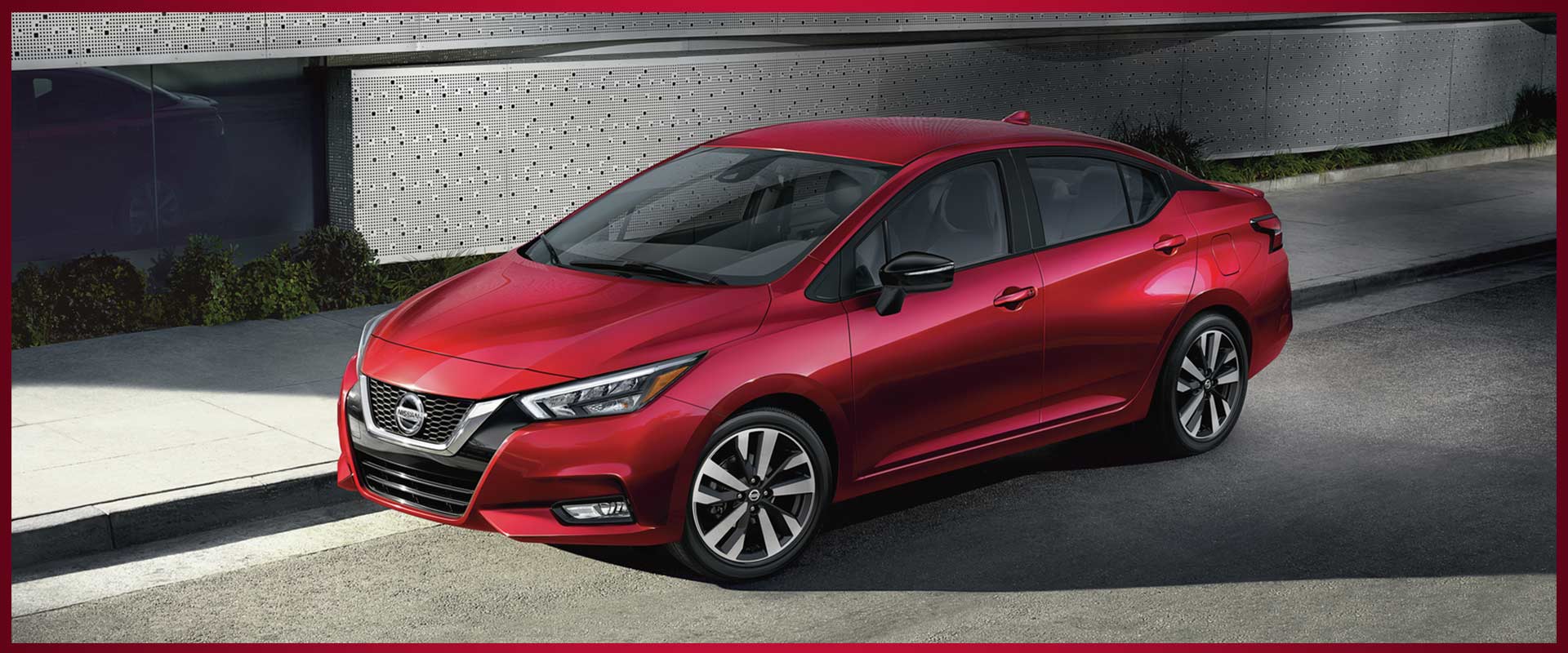
Moreover, the car offers limited cargo capacity and restricted legroom, which can make packing for a trip difficult and lead to cramped seating, especially for multiple passengers.
Another concern is the small engine, which may struggle when climbing hills or maintaining higher speeds, affecting the overall driving experience.
While the Versa is well-suited for everyday commuting and shorter drives, its lack of spaciousness and comfort features make it a less ideal option for extended road trips particularly if you’re traveling with more than two people.
2. Jeep Wrangler
There’s no denying the iconic status of the Jeep Wrangler, available in both two-door and four-door configurations. Its rugged styling and off-road capabilities make it a favorite for adventurous terrain, but those same traits can be drawbacks when it comes to road trip suitability.
The Wrangler’s fuel economy and ride quality are notable concerns. Despite its spacious interior and fun features like removable doors and roof, the vehicle’s ride is often bumpy and loud, which can wear on passengers over the course of a long journey.
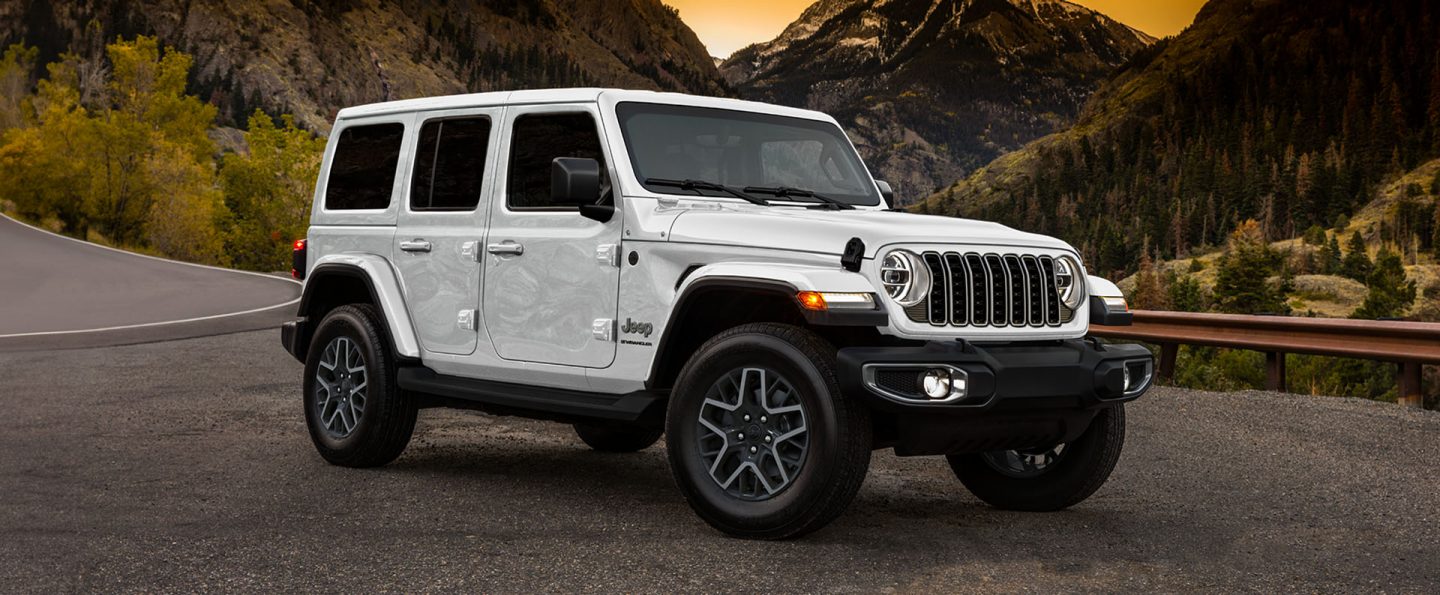
The Wrangler’s boxy shape and high center of gravity also contribute to reduced stability at highway speeds and in windy conditions, which can make the drive more tiring and less enjoyable for the driver.
Fuel consumption is another major downside. Gasoline-powered four-door Wranglers from 2020 onward get between 17–24 mpg on the highway and 13–21 mpg in city driving.
While these figures aren’t bad for an off-roader, they’re far from ideal for long road trips, where frequent fuel stops can quickly add up.
3. Toyota Yaris
The Toyota Yaris is a budget-friendly subcompact car that offers excellent fuel efficiency, making it a practical option for city driving and short commutes. However, its small engine and limited interior space may not make it the best fit for long road trips.
The compact size of the Yaris often results in a cramped experience for passengers especially in the rear seats and the limited cargo capacity can make it difficult to pack everything necessary for an extended journey.
In addition, the Yaris features a relatively stiff suspension, which can lead to a less comfortable ride over long distances and uneven road surfaces.
The Toyota Yaris is a compact car that has gained a reputation for being affordable, reliable, and fuel-efficient, making it a popular choice for urban driving and first-time car buyers.
Initially introduced in 1999, the Yaris has undergone several generations of updates, with each version offering improvements in design, technology, and safety.
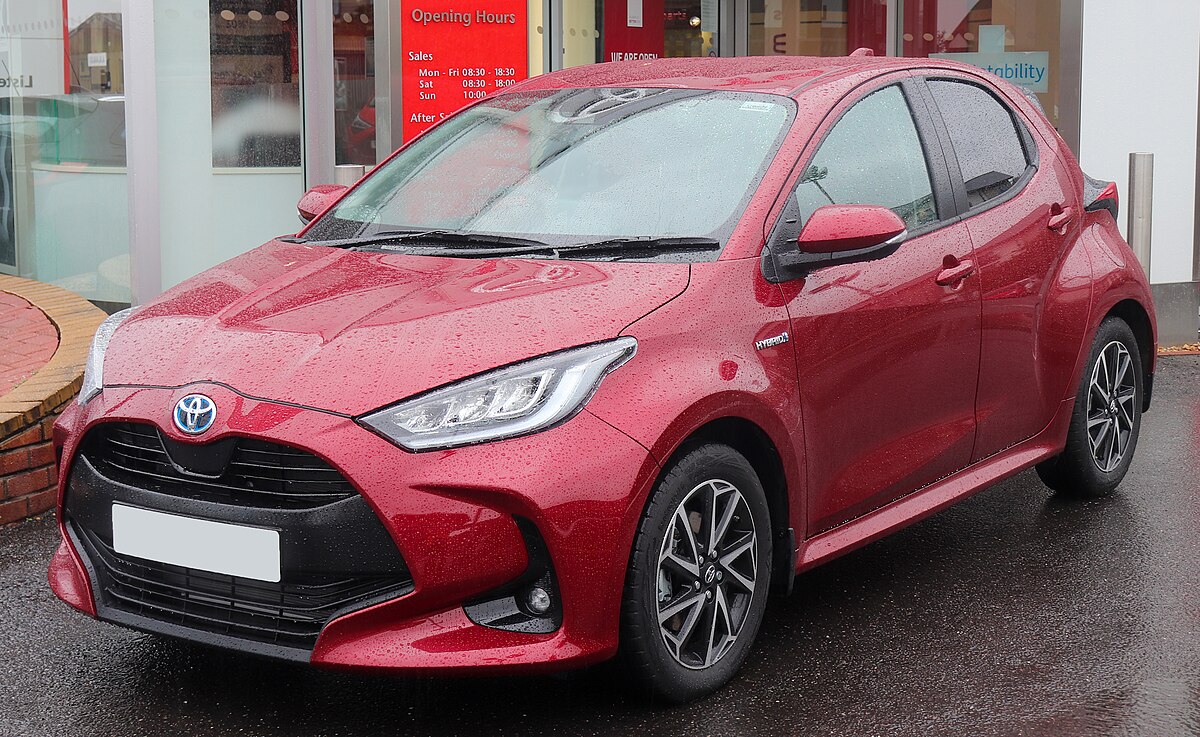
The most recent iteration, the Toyota Yaris (2020 and onward), is available in various body styles, including a sedan and hatchback. It is powered by a 1.5-liter four-cylinder engine, providing adequate power for daily commuting and city driving, while maintaining impressive fuel economy.
Depending on the market and model year, it’s offered with either a manual transmission or an automatic transmission, including a continuously variable transmission (CVT) in some models.
Inside, the Yaris is designed to maximize space in a small package. The cabin is relatively simple but functional, with an intuitive infotainment system, including features like Apple CarPlay and Android Auto on newer models.
While it’s not as spacious as larger sedans or SUVs, it offers a comfortable driving experience for its size, with ample front-seat room and enough space for passengers in the rear, though the backseat might feel cramped for taller individuals.
In terms of safety, the Yaris is equipped with advanced driver assistance features, such as Toyota Safety Sense (TSS), which includes pre-collision warning, lane departure alert, and adaptive cruise control. These features make the Yaris a solid choice for those who value safety, especially in an entry-level car.
The Toyota Yaris also stands out for its low cost of ownership. It offers excellent fuel economy, with many versions achieving over 30 miles per gallon in city driving and even higher on the highway.
Additionally, Toyota’s reputation for reliability means that the Yaris tends to have lower maintenance and repair costs compared to many other vehicles in its class.
Overall, the Toyota Yaris is an economical and practical choice for those looking for a reliable, budget-friendly vehicle that’s easy to maneuver in tight spaces and offers decent performance for everyday driving. It competes in the subcompact car segment alongside models like the Honda Fit, Hyundai Accent, and Ford Fiesta.
4. Dodge Challenger
The Dodge Challenger is a classic muscle car built for power and performance, and while the idea of taking a high-powered sports car on a road trip might seem appealing, the reality is a bit different.
Though the front seats are spacious and comfortable, the Challenger falls short in terms of practicality for long-distance travel. Rear-seat space is limited, and the trunk isn’t particularly large, making it challenging to bring along sufficient luggage.
The vehicle’s firm suspension can result in a jarring ride on less-than-perfect roads, and its poor fuel economy will likely require more frequent stops to refuel.
Additionally, the large size of the Challenger can make maneuvering in traffic or tight parking areas more difficult an added stressor during a lengthy drive.
While it might shine on short trips or among driving enthusiasts, the Challenger is better left off the list when planning a long road trip.
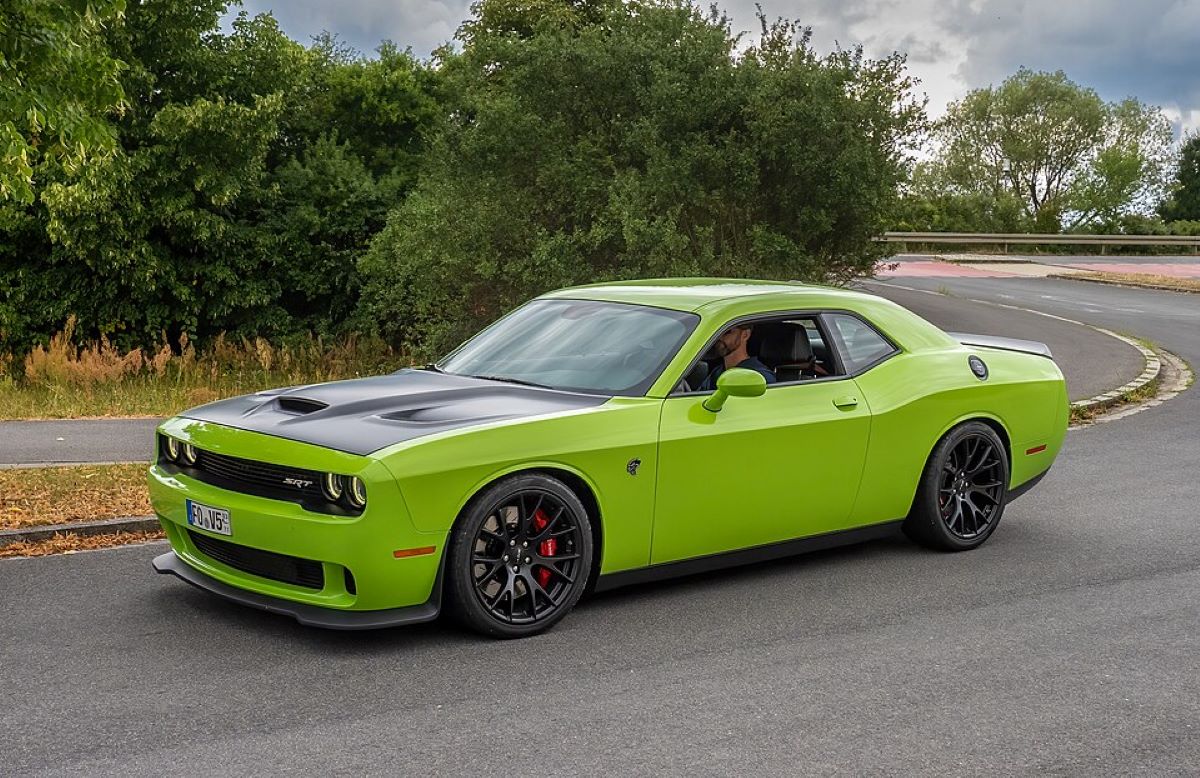
The Dodge Challenger SRT Hellcat is a car designed to leave a lasting impression, particularly on its tires. It stands as one of the final coupes to offer the unmistakable roar of an American-style V-8 engine.
The base model of the Challenger SRT Hellcat generates an impressive 717 horsepower from its supercharged 6.2-liter V-8 engine, but that’s just the beginning.
The Hellcat Redeye version cranks the power up to 797 horsepower, while the most aggressive variant, the Hellcat Redeye Widebody Jailbreak edition, pushes the output to a thrilling 807 horsepower.
All models come with either a six-speed manual or an eight-speed automatic transmission, with rear-wheel drive as the sole configuration. These powerhouses are always primed to unleash massive clouds of smoke from their enormous 12-inch-wide rear tires.
While competitors like the Chevy Camaro ZL1 and Ford Mustang Shelby GT500 may be more tailored for road-course performance, the Challenger SRT Hellcat is built for drag strip dominance, delivering unparalleled straight-line speed.
For those interested in the more everyday versions of the Challenger, such as those with all-wheel drive, V-6, or smaller V-8 engines, these are reviewed separately.
As Dodge prepares for the final production year of the current generation of the Challenger SRT Hellcat, the 807-hp Jailbreak package becomes available on both Redeye and non-Redeye models.
In a nod to its legacy, every 2023 Challenger will feature a special “Last Call” plaque under the hood, marking the end of an era before Dodge transitions to a new generation of performance vehicles with electrified powertrains.
5. Tesla Model 3 or Model Y
The Tesla Model 3 and Model Y are well-known electric vehicles that boast cutting-edge technology and impressive acceleration. However, they may not be the most suitable choices for road trips at the moment.
One of the biggest concerns when it comes to electric vehicles is range anxiety the worry that the battery may run out before reaching a charging station.
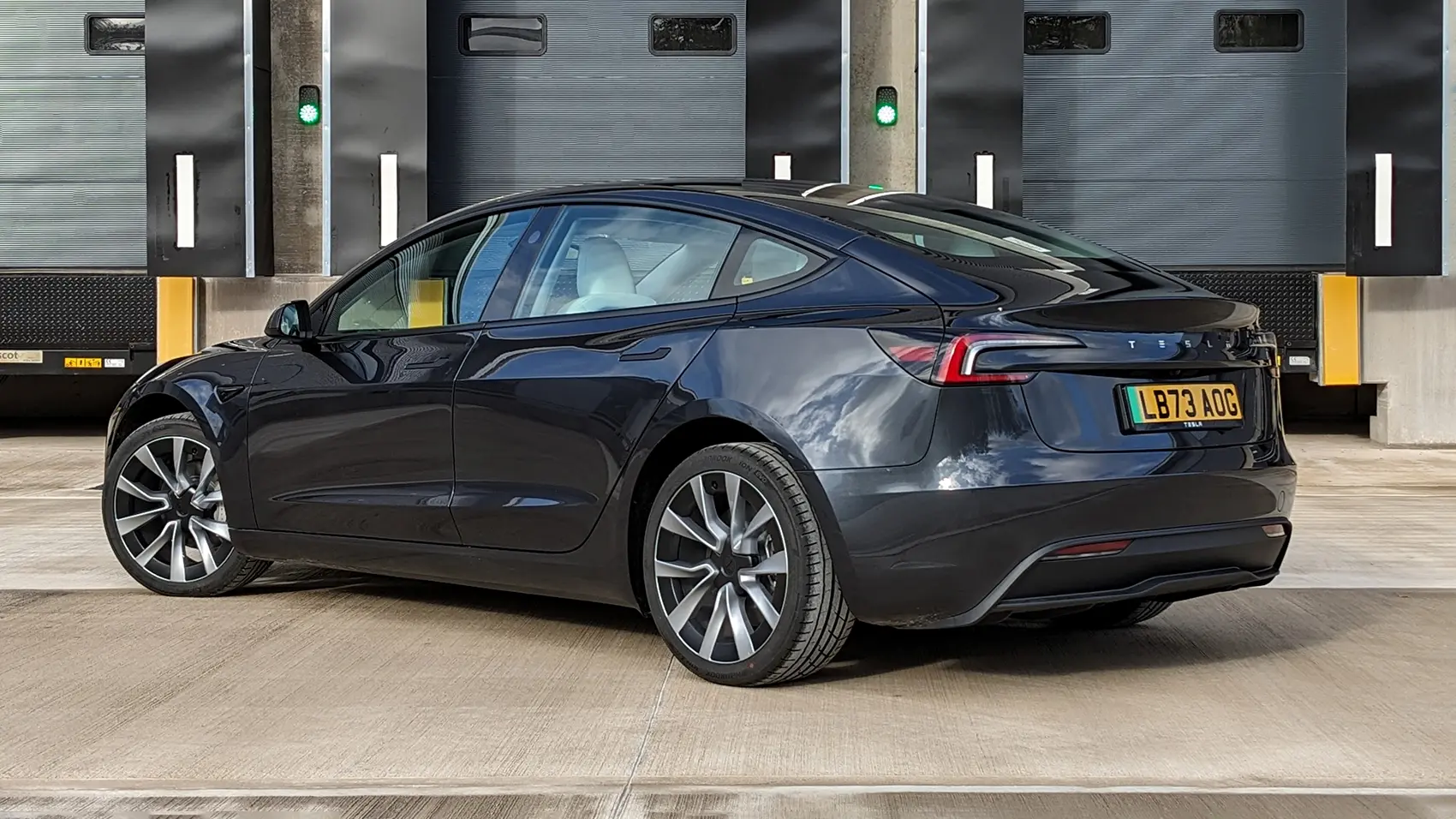
While both the Model 3 and Model Y offer a range of approximately 300 miles, access to charging infrastructure can still be inconsistent, especially in remote areas, which complicates planning for long trips.
Furthermore, both models offer limited cargo space and rear legroom, potentially resulting in cramped conditions and less packing flexibility.
The firm suspension on these Teslas can also lead to a less-than-smooth ride on extended drives. While both the Model 3 and Model Y perform well for everyday commutes and shorter journeys, they currently fall short as ideal choices for extended road trips.

